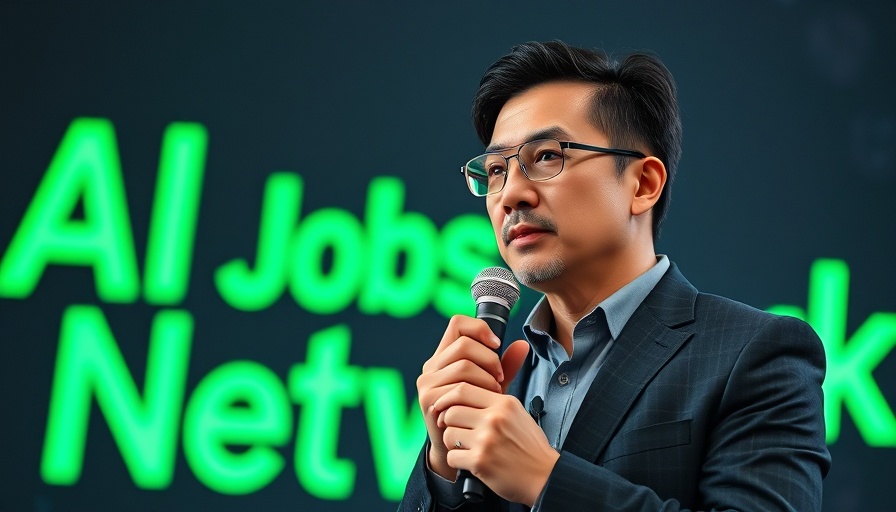
OpenAI's Bold Move: A New Era of AI Job Connections
In a groundbreaking announcement, OpenAI is poised to launch a platform that aims to redefine how job seekers and employers interact in the age of artificial intelligence. Dubbed as the potential "LinkedIn for AI," this innovative hiring network will leverage OpenAI's cutting-edge technology, specifically ChatGPT, to connect organizations with candidates skilled in AI applications. Backed by major players like Walmart and supported by government initiatives, this platform reflects a significant shift toward integrating technology with workforce development.
In OpenAI Is About to Launch AI JOBS NETWORK (LinkedIn for AI), the conversation explores the launching of an innovative job platform designed to enhance employment opportunities in the AI sector, prompting an analysis of its broader implications.
The Certification Program: Bridging Skills Gaps
OpenAI's vision includes a concerted effort to certify 10 million Americans in AI fluency by 2030. This ambitious goal will facilitate a streamlined approach for workers to prove their proficiency in AI tools—a critical asset as industries increasingly rely on such technologies. The certification process is set to include various levels of AI competency, from basic usage to advanced skills such as prompt engineering, allowing a broad spectrum of job seekers, from retail employees to corporate strategists, to enhance their qualifications.
Private Sector Involvement: Walmart and Beyond
Walmart's collaboration stands out as a noteworthy example of how large corporations are responding to the evolving job landscape. With over 1.6 million employees, Walmart is not just a retail giant but also a pioneer in integrating AI into operational practices. The company's commitment to providing free AI certification to its workforce symbolizes a practical approach to workforce development that aligns with OpenAI’s initiative. By enabling staff to utilize AI tools effectively, Walmart aims to enhance productivity and maintain its competitive edge in the retail industry.
The Wider Impact: Cultivating a Culture of AI Literacy
The implications of this platform extend beyond just job placements; they encompass a cultural shift towards AI literacy across the United States. As organizations like OpenAI and Walmart redefine workforce training, it signals to other industries the importance of investing in employee capabilities. The initiative by OpenAI to educate the workforce about AI creates opportunities for both individual career advancement and overall economic growth. Engagement with local businesses, state governments, and C-suite executives illustrates a comprehensive strategy to harness AI's potential while mitigating its disruptive effects.
The Polarization of the Workforce: Threats and Opportunities
While OpenAI's platform aims to address burgeoning job demands, it concurrently highlights the risks of AI-related job displacement. Predictions indicate that up to 50% of entry-level positions may vanish by 2030, urging both employees and employers to adapt swiftly. The silver lining, however, lies in the creation of new jobs requiring AI-savvy professionals. This dual-edged sword approach fosters both concern and optimism; individuals must navigate an ever-changing job market with the support of innovative resources like OpenAI's certification programs.
Political Dimensions and Corporate Strategy
Further complicating the narrative is the intertwining of politics and corporate strategy. OpenAI's alignment with the current administration, evidenced by recent events at the White House, demonstrates the increasing relevance of technology in political discussions. The support from key individuals such as Sam Altman, OpenAI's CEO, showcases how technological advancements are frequently leveraged to bolster economic arguments. These connections are strategic, as fostering a pro-business climate ultimately benefits both AI development and broader economic policies.
Facing Internal Challenges: Legal Struggles and Company Dynamics
Despite the outwardly polished launch of the new jobs platform, behind the scenes, OpenAI appears to be grappling with accusations of paranoia and internal strife. Reports of legal actions aimed at thwarting perceived threats from high-profile competitors such as Elon Musk and Mark Zuckerberg signal underlying tensions within the company. This discord raises questions about the sustainability of OpenAI’s leadership and strategic direction amidst unprecedented growth and competition.
A Future Diverging into AI Wealth Creation
The looming question remains: will OpenAI facilitate the ascent into a new wave of wealth generation through AI, or will it inadvertently contribute to greater inequality by leaving many behind? The stark socio-economic divide in access to tech skills accentuates the need for precise planning and inclusivity within AI initiatives. Emergent billionaires from the AI sector underscore the potential prosperity arising from this transformation, yet it also reminds us of the equitable distribution challenges that tech giants must confront as they navigate this evolution.
Conclusion: Seizing the AI Advantage
As the world watches OpenAI carve its niche in the job market, the duality of opportunity and disruption looms large for both employees and organizations. The AI job network, alongside certification programs, presents an actionable route for individuals looking to bolster their careers while adapting to a technology-driven future. Stay informed, engage with the training opportunities, and be prepared to champion your future path in an increasingly automated landscape.
 Add Row
Add Row  Add
Add 




Write A Comment